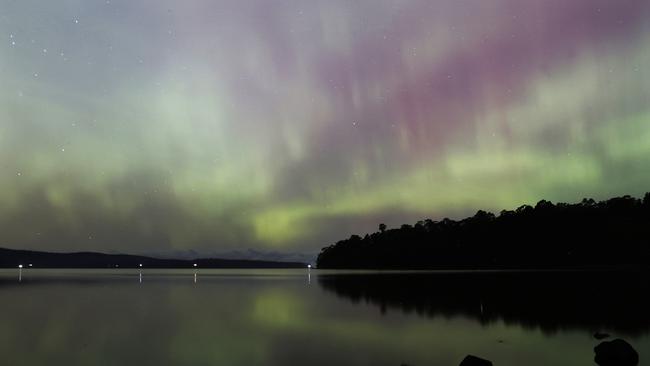Peak solar activity brings auroras and potential tech threat
Many have taken joy in seeing the night sky light up with auroras, but the events could pose hidden costs to global technology infrastructure. A UTAS space scientist explains how.

Tasmania
Don't miss out on the headlines from Tasmania. Followed categories will be added to My News.
While many have taken joy in seeing the night sky light up with auroras recently, the events could pose hidden costs and threats to global technology infrastructure, a scientist says.
Auroras result from geomagnetic storms triggered by solar activity, with May’s green, pink and purple skies showing some dramatic solar activity for researchers.
University of Tasmania (UTAS) space scientist Dr Guifre Molera Calves said space weather events that cause auroras to appear are on the rise due to the Sun’s current solar cycle.

“These cycles peak around every 11 years, and we are currently nearing a solar maximum expected around 2025,” he said.
“This increase in solar activity brings both spectacular auroras and heightened risks to our technology,” Dr Molera Calvés said.
Researchers recorded a sunspot 15 times the diameter of Earth on May 9 this year, bringing intense bursts of wind and solar flares.
The solar wind hitting the Earth’s magnetosphere results in the light show of auroras, but could also disrupt most of our technology.
“Geomagnetic storms can disrupt satellites, power grids, and electronic systems, causing billions of dollars in damage and repair costs,” Dr Molera Calves said.
“Few incidents were registered during the May event, with some equipment with GPS functions deactivated or satellite deployment into orbit postponed as a precaution.

“There is only recorded knowledge of a very extreme geomagnetic storms once historically in 1859, but not many electric systems existed before that. While chances are very small of an extreme event, there is still a risk due to the prevalence of technology relying on satellites.”
UTAS space researchers work closely with NASA and European space missions with the UTAS’ own telescopes to understand how space weather impacts Earth’s infrastructures and improve the ability to predict space weather events and mitigate their impact.
More Coverage
Originally published as Peak solar activity brings auroras and potential tech threat





